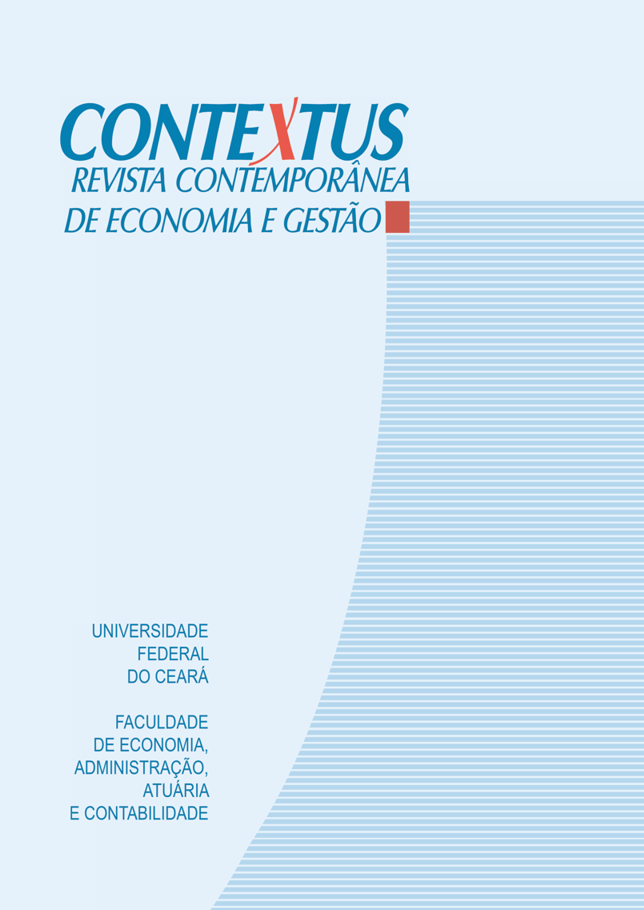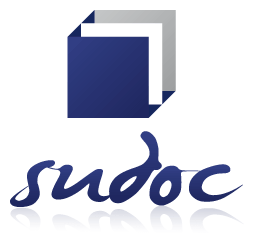Elementos influyentes de la adopción tecnológica: Estudio de caso sobre gestión en una institución de eseñanza
DOI:
https://doi.org/10.19094/contextus.2021.61445Palabras clave:
tecnología de la información y la comunicación, adopción tecnológica, gestión educativa, marco TOE, estúdio de casoResumen
Este estudio buscó analizar, desde el punto de vista de los gestores educativos, y con base en el marco TOE, los determinantes, impulsores y creadores de barreras para la adopción e implementación de las tecnologías de la información y la comunicación en el ámbito de una institución educativa. Se realizó un estudio cualitativo, descriptivo y exploratorio, adoptando el estudio de caso único como estrategia de investigación. Los datos fueron recolectados a través de entrevistas, investigación documental y observaciones directas, que posteriormente fueron sometidas a análisis de contenido. Considerando el marco TOE, los resultados demuestran que los principales determinantes de la adopción tecnológica están vinculados al contexto ambiental; que los elementos impulsores estén dispuestos en el contexto organizativo; y que los elementos que crean barreras involucran los contextos organizacional y ambiental.
Citas
Ajzen, I. (1985). From intentions to actions: A theory of planned behavior. In J. E. Kuhl & J. Beckmann (Orgs.), Action control: From cognition to behavior. Berlim: Springer-Verlag.
Ajzen, I. (1991). The theory of planned behavior. Organizational Behavior and Human Decisions Processes, 50(2), 179-211. https://doi.org/10.1016/0749-5978(91)90020-T
Ajzen, I., & Fishbein, M. (2005). The influence of attitudes on behaviour. In D. Albarracin, B. T. Johnson & M. P. Zanna (Eds.), The Handbook of Attitudes. Lawrence Erlbaum Associates.
Albino, R. D. (2015). Uma visão integrada sobre o nível de uso das tecnologias da informação e comunicação em escolas brasileiras. (Dissertação de Mestrado). Universidade de São Paulo, São Paulo, Brasil. https://www.teses.usp.br/teses/disponiveis/12/12139/tde-10082015-141546/publico/RaphaelDonaireAlbino_Corrigida.pdf
Al-Furaih, S. A. A., & Al-Awidi, H. M. (2020). Teachers’ change readiness for the adoption of smartphone technology: Personal concerns and technological competency. Technology, Knowledge and Learning, 25, 409-432. https://doi.org /10.1007/s10758-018-9396-6
Alone, K. (2017). Adoption of e-learning technologies in education institutions/organizations: a literature review. Asian Journal of Educational Research, 5(4), 63-71. http://www.multidisciplinaryjournals.com/wp-content/uploads/2017/07/Full-Paper-ADOPTION-OF-E-LEARNING-TECHNOLOGIES-IN-EDUCATION.pdf
Angeles, R. (2014). Using the technology-organization-environment framework for analyzing Nike’s considered Index Green Initiative: A decision support system-driven system. Journal of Management and Sustainability, 4(1), 96-113. https://doi.org/10.5539/jms.v4n1p96
Anjos, M. B., & Rôças, G. (2017) As políticas públicas e o papel social dos institutos federais de educação, ciência e tecnologia. Natal: Editora IFRN.
Awa, H. A., Ukoha, O., & Igwe, S. R. (2017). Revisiting technology-organization-environment (T-O-E) theory for enriched applicability. The Bottom Line, 30(1), 2-22. https://doi.org/10.1108/BL-12-2016-0044
Awa, H. O., Ojiabo, O. U., & Orokor, L. E. (2017). Integrated technology-organization-environment (T-O-E) taxonomies for technology adoption. Journal of Enterprise Information Management, 30(6), 893-921. https://doi.org/10.1108/JEIM-03-2016-0079
Awa, H. O., Ojiabo, U. O., & Emecheta, B. C. (2015). Integrating TAM, TPB and TOE frameworks and expanding their characteristic constructs for e-commerce adoption by SMEs. Journal of Science and Technology Policy Management, 6(1), 76-94. https://doi.org/10.1108/JSTPM-04-2014-0012
Baker, J. (2012). The technology–organization–environment framework. In Y. K. Dwivedi, M. R. Wade & S. L. Schneberger (Eds). Information systems theory: Explaining and predicting our digital society. New York: Springer
Balaid, A., Rozan, M. Z. A., & Abdullah, S. N. (2014). Conceptual model for examining knowledge maps adoption in software development organizations. Asian Social Science, 10(15), 118-132. https://doi.org/10.5539/ass.v10n15p118
Barbosa, N., & Faria, A. P. (2008). Technology adoption: Does labour skill matter? Evidence from Portuguese firm-level data. Empirica, 35, 179-194. https://doi.org/10.1007/s10663-007-9056-x
Bardin, L. (2006). Análise de Conteúdo (4 ed.). São Paulo: Edições 70.
Barroso, R. C. A., & Silva, J. A. B. (2014). Política de uso das tecnologias da informação, comunicação e mídias em Sergipe: Uma história a ser contada. Revista do Instituto Histórico e Geográfico de Sergipe, 2(44), 293-310. https://seer.ufs.br/index.php/rihgse/article/view/11957
Bittencourt, G. B., Filho (2019). Quatro campi do IFS estão entre os dez primeiros colocados em ranking com as melhores instituições. http://www.ifs.edu.br/ultimas-noticias/7807-quatro-campi-do-ifs-estao-entre-os-dez-primeiros-colocados-em-ranking-com-as-melhores-instituicoes
Brasil (2017). IFS: Melhor instituto federal do norte e nordeste. Instituto Federal de Sergipe. http://ifs.edu.br/ultimas-noticias/279-destaque/6191-ifs-melhor-instituto-federal-do-norte-e-nordeste
Caliari, K. V. Z., Zilber, M. A., & Perez, G. (2017). Tecnologias da informação e comunicação como inovação no ensino superior presencial: uma análise das variáveis que influenciam na sua adoção. REGE - Revista de Gestão, 24(3), 247-255. https://doi.org/10.1016/j.rege.2017.05.003
Cao, Q., Jones, D. R., & Sheng, H. (2014). Contained nomadic information environments: Technology, organization, and environment influences on adoption of hospital RFID patient tracking. Information & Management, 51(2), 225-239. https://doi.org/10.1016/j.im.2013.11.007
Castells, M. (2003). A sociedade em rede (7 ed.) São Paulo: Paz & Terra.
Chuang, S., Luor, T., & Lu, H. (2014). Assessment of institutions, scholars, and contributions on agile software development (2001-2012). Journal of Systems and Software, 93(7), 84-101. https://doi.org/10.1016/j.jss.2014.03.006
Creswell, J. W. (2009). Research design: Qualitative, quantitative and mixed methods approaches (3 ed.) Thousand Oaks: Sage Publications.
Cruz, C. F. (2019). IFS transforma vidas e promove desenvolvimento. Instituto Federal de Educação, Ciência e Tecnologia de Sergipe. http://www.ifs.edu.br/ultimas-noticias/7731-ifs-transforma-a-vida-de-pessoas-e-promove-o-desenvolvimento
Davis, F. D. (1989). Perceived usefulness, perceived ease of use, and user acceptance of information technology. MIS Quarterly, 13(3), 319‐340. https://doi.org/10.2307/249008
Eze, S. C., Awa, H. O., Okoye, J. C., Emecheta, B. C. & Anazodo, R. O. (2013). Determinant factors of information communication technology (ICT) adoption by government‐owned universities in Nigeria: A qualitative approach. Journal of Enterprise Information Management, 26(4), 427-443. https://doi.org/10.1108/JEIM-05-2013-0024
Fu, J. S. (2013). ICT in education: A critical literature review and its implications. International Journal of Education and Development using Information and Communication Technology (IJEDICT), 9(1), 112-125. http://files.eric.ed.gov/fulltext/EJ1182651.pdf
Fuller, M., Hardin, A., & Scott, C. (2007). Diffusion of virtual innovation. The Data Base for Advances in Information Systems, 38(4), 40-44. https://doi.org/10.1145/1314234.1314243
Gangwar, H., Date, H., & Ramaswamy, R. (2015). Understanding determinants of cloud computing adoption using an integrated TAM-TOE model. Journal of Enterprise Information Management, 28(1), 107-130. https://doi.org/10.1108/JEIM-08-2013-0065
Gangwar, H., Date, H., & Raoot, A. D. (2013). Review on IT adoption: insights from recent technologies. Journal of Enterprise Information Management, 27(4), 488-502. https://doi.org/10.1108/JEIM-08-2012-0047
Hoong, A. L. S., Thi, L. S., & Lin, M. (2017). Affective technology acceptance model: Extending technology acceptance model with positive and negative affect. In M. Mohiuddin, N. Halilem, S. M. A. Kobir & C. Yuliang (Eds.), Knowledge Management Strategies and Applications. IntechOpen. https://doi.org/10.5772/intechopen.70351
Hopp, T., & Gangadharbatla, H. (2016). Examination of the factors that influence the technological adoption intentions of tomorrow’s new media producers: A longitudinal exploration. Computers in Human Behavior, 55(b) 1117-1124. https://doi.org/10.1016/j.chb.2014.09.040
IFS (2018). Instituto Federal de Sergipe http://www.ifs.edu.br/institucional
INEP (2018). IGC - Resultados. Instituto Nacional de Estudos e Pesquisas Educacionais Anísio Teixeira. http://download.inep.gov.br/educacao_superior/igc_cpc/2018/resultado_igc_2017.xlsx
ISTE (2009). ISTE Standards Administrators. International Society For Technology in Education. https://bityli.com/ULvNb
Jia, Q., Guo, Y., & Barnes, S. J. (2017). Enterprise 2.0 post-adoption: Extending the information system continuance model based on the technology-organization-environment framework. Computers in Human Behavior, 67, 95-105. https://doi.org/10.1016/j.chb.2016.10.022
Klug, W., Bai, X. (2015). Factors affecting cloud computing adoption among universities and colleges in the United States and Canada. Issues in Information Systems, 16(3), 1-10. https://doi.org/10.48009/3_iis_2015_1-10
Lai, P. C. (2017). The literature review of technology adoption models and theories for the novelty technology. Journal of Information Systems and Technology Management, 14(1), 21-38. http://doi.org/10.4301/S1807-17752017000100002
Landsbergen, D., Jr., & Wolken, G, Jr. (2002). Realizing the promise: Government information systems and the fourth generation of information technology. Public Administration Review. 61(2), 206-220. https://doi.org/10.1111/0033-3352.00023
Lima, N. (2017). Parcerias com empresas de tecnologia prometem elevar qualidade do ensino. Instituto Federal de Educação, Ciência e Tecnologia de Sergipe, 2017. http://www.ifs.edu.br/ultimas-noticias/195-inovacao/5648-parcerias-educacionais-2
Link, T. C., & Reece, B. (2020). Barriers to the adoption of technological innovations in corrections: A review and case study. International Journal of Offender Therapy and Comparative Criminology, 65(2-3), 262-281. https://doi.org/10.1177/0306624X20952396
Luftman, J., Lyytinen, K., & Zvi, T. B. (2017). Enhancing the measurement of information technology (IT) business alignment and its influence on company performance. Journal of Information Technology, 32(1), 26-46. https://doi.org/10.1057/jit.2015.23
Lunardi, G. L., Dolci, B. D., & Wendland, J. (2013). Internet móvel nas organizações: fatores de adoção e impactos sobre o desempenho. RAC - Revista de Administração Contemporânea, 17(6). https://doi.org/10.1590/S1415-65552013000600004
Machado, P. A., Bellini, C. G. P., & Leite, J. C. L. (2011, September). Adoção e uso de inovação tecnológica em educação a distância: Estudo sobre integração de TAM e IDT. Anais do Encontro da Associação Nacional de Pós-Graduação e Pesquisa em Administração, Rio de Janeiro, Brasil, 33. http://www.anpad.org.br/admin/pdf/ADI1671.pdf
Melo, C. O. M. (2018). Adoção e implementação das tecnologias da informação e comunicação: um estudo de caso sobre maturidade eletrônica. (Dissertação de Mestrado). Universidade Federal de Sergipe, São Cristóvão, Brasil.
Melo, C. O. M., Luft, M. C. M. S., & Rocha, R. O. R. (2019) elementos influenciadores da adoção tecnológica: Estudo de caso sobre a gestão em uma instituição de ensino. Anais do Encontro da Associação Nacional de Pós-Graduação e Pesquisa em Administração, São Paulo, Brasil, 43. http://www.anpad.org.br/abrir_pdf.php?e=MjY3OTE=
Montealegre, R., Iyengar, K., & Sweeney, J. (2014). Toward a process model of IT adoption ambidexterity: A revelatory case-study. International Conference on Information Systems, Auckland, New Zealand. https://bit.ly/2KcFLQo
Moore, G. C., & Benbasat, I. (1991). Development of an Instrument to measure the perceptions of adopting and information technology innovation. Information Systems Research, 2(3), 173-239. https://doi.org/10.1287/isre.2.3.192
Newman, W. L. (2013). Social Research Methods: Qualitative and quantitative approaches (7 ed.) Harlow: Pearson Education.
Oliveira, T., & Martins, M. F. (2011). Literature review of information technology adoption models at firm level. The Electronic Journal Information Systems Evaluation, 14(1), 110-121. https://academic-publishing.org/index.php/ejise/article/view/389
Pina, F., Kurtz, R., Ferreira, J. B., Freitas, A., Silva, J. F., & Giovannini, C. J. (2016). M-learning adoption in higher education: the professor's point of view. Revista eletrônica de administração. 22(2), 279-306. https://doi.org/10.1590/1413-2311.0262015.54352
Platt, J. (2007). Case study. In W. Outhwaite & S. Turner. The Sage Handbook of Social Science Methodology (pp. 100-118). London: Sage.
Portz J. D., Bayliss, E. A., Bull, S., Boxer, R. S., Bekelman, D. B., Gleason, K., & Czaja, S. (2019). Using the technology acceptance model to explore user experience, intent to use, and use behavior of a patient portal among older adults with multiple chronic conditions: Descriptive qualitative study. Journal of Medical Internet Research, 21(4). https://doi.org/10.2196/11604
Rahayu, R., & Day, J. (2015). Determinant factors of e-commerce adoption by SMEs in developing country: evidence from Indonesia. Procedia - Social and Behavioral Sciences, 195, 142-150. https://doi.org/10.1016/j.sbspro.2015.06.423
Rogers, E. M. (2003). Diffusion of Innovations (5 ed). New York: Simon & Schuster.
Sabherwal, R., Jeyaraj, A., & Chowa, C. (2006). Information system success: individual and organizational determinants. Management Science, 52(12), 1849-1864. https://doi.org/10.1287/mnsc.1060.0583
Sahin, I. (2006). Detailed review of Rogers' diffusion of innovations theory and educational technology-related studies based on Rogers' theory. The Turkish Online Journal of Educational Technology, 5(2), 14-23. https://files.eric.ed.gov/fulltext/EJ1102473.pdf
Salleh, K. A., Janczewski, L. J., & Beltran, F. (2015). SEC-TOE framework: Exploring security determinants in big data solutions adoption. Pacific Asia Conference on Information Systems, 19. http://aisel.aisnet.org/pacis2015/203?utm_source=aisel.aisnet.org%2Fpacis2015%2F203&utm_medium=PDF&utm_campaign=PDFCoverPages
Santos, M. I. (2018). Instituto Federal de Sergipe. http://www.ifs.edu.br/noticias-dti/6842-pesquisa-do-tcu-sobre-governanca-de-ti-coloca-ifs-na-8-colocacao-entre-106-instituicoes
Saunders, M. Lewis, P., & Thornhill, A. (2009). Research methods for business students (5 ed.). England: Pearson Education Limited.
Scupola, A. (2009). SMEs’ e-commerce adoption: perspectives from Denmark and Australia. Journal of Enterprise Information Management, 22(1/2), 152-166. https://doi.org/10.1108/17410390910932803
Selim, H. M., Eid, R., & Agag, G. (2020). Understanding the role of technological factors and external pressures in smart classroom adoption. Education + Training, 62(6), 631-644. https://doi.org/10.1108/ET-03-2020-0049
Setubal, M. A. (2015). Educação e sustentabilidade: Princípios e valores para a formação de educadores. São Paulo: Peirópolis.
Shah, M. (2014). Impact of management information systems (MIS) on school administration: What the literature says. Procedia - Social and Behavioral Sciences, 116, 2799-2804. https://doi.org/10.1016/j.sbspro.2014.01.659
Sharma, R., & Mishra R. (2014). A review of evolution of theories and models of technology adoption. Indore Management Journal, 6(2), 17-29. https://bit.ly/3pIvCv1
Sila, I. (2015). The state of empirical research on the adoption and diffusion of business-to-business e-commerce. International Journal of Electronic Business, 12(3), 258-301. https://pdfs.semanticscholar.org/bdbc/b8c3acbfb56677aaf8f258764e322fd0036e.pdf
Silva, E. T., Torres, A. A. G., & Nicolini, A. M. (2016). Competências contempladas pelos cursos de pós-graduação lato e stricto sensu para gestores de IES: similaridades e divergências. In Anais do Colóquio Internacional de Gestión Universitária (CIGU), Arequipá, Peru, 16. https://bit.ly/2UDBAiz
Silva, F. M., Aguiar, T. L., Binotto, E., Siqueira, E. S., & Corona, F. P. (2014). Tornar-se e deixar de ser diretor: a experiência de professores em uma universidade federal do centro-oeste. Revista de Administração, Contabilidade e Economia, 13(1), 123-151. https://portalperiodicos.unoesc.edu.br/race/article/view/3755
Silva, I. C. O., França, M. L. C., & Almeida, G. M. (2016). Gestão com TIC no espaço escolar: Um recorte sobre o município de Delmiro Gouveia - AL. In Revista do Encontro Internacional de Formação de Professores e Fórum Permanente de Inovação Educacional, 9(1). https://eventos.set.edu.br/enfope/article/view/1912/685
Silva, M. S. T., Correia, S. N., Machado, P. A., & Oliveira, V. M. (2020). Adoption of information technology in public administration: A focus on the organizational factors of a Brazilian federal university. Teoria e Prática em Administração, 10(2), 138-153. https://doi.org/10.21714/2238-104X2020v10i2-51923
Souza, C. A., Siqueira, S., & Reinhard, N. (2017). Digital divide of small and medium-sized enterprises: An analysis of influencing factors using the TOE Theory. Revista de Administração Mackenzie, 18(2), 15-48. https://doi.org/10.1590/1678-69712017/administracao.v18n2p15-48
Stake, R. E. (2000). Case Studies. In N. K. Denzin & Y. Lincoln (Eds.), Handbook of Qualitative Research (2 ed.). Thousand Oaks, Sage.
Taherdoost, H. (2018). A review of technology acceptance and adoption models and theories. Procedia Manufacturing, 22, 960-967. https://doi.org/10.1016/j.promfg.2018.03.137
Tan, Ç. (2016). Technology usage in school management: Electronic school. International Journal of Learning and Teaching, 2(1), 53-57. https://doi.org/10.18178/ijlt.2.1.53-57
Tashkandi, A., & Al-Jabri, I. (2015). Cloud computing adoption by higher education institutions in Saudi Arabia analysis based on TOE. International Conference on Cloud Computing, 1-8. https://doi.org/10.1109/CLOUDCOMP.2015.7149634
Thanh, N. V., Yoon, H., & Hwang, J. (2018). A study on the factors affect to technological adoption of e-Government Information System interoperability in Vietnam. The International Technology Management Review, 7(2), 125-143. https://doi.org/10.2991/itmr.2018.7.2.2
Tornatzky, L., & Fleischer, M. (1990). The Process of Technology Innovation. MA: Lexington Books.
Tsou, H., & Hsu, S. H. (2015). Performance effects of technology-organization-environment openness, service co-production, and digital-resource readiness: The case of the IT industry. International Journal of Information Management, 35(1), 1-14. https://doi.org/10.1016/j.ijinfomgt.2014.09.001
Velloso, V. F., Yanaze, M. H., & Oliveira, E. A. A. Q. (2015). A sistemática da comunicação em TI: Uma contribuição dos profissionais de tecnologias de informação do vale do paraíba. Revista Brasileira de Gestão e Desenvolvimento Regional, 11(2), 379-402. https://www.rbgdr.net/revista/index.php/rbgdr/article/view/1783/460
Venkatesh, V., & Davis, F. D. (2000). A theoretical extension of the technology acceptance model: Four longitudinal field studies. Management Science, 46(2), 186-204. https://doi.org/10.1287/mnsc.46.2.186.11926
Venkatesh, V., Morris, M. G., Davis, G. B, & Davis, F. D. (2003). User acceptance of information technology: Toward a unified view. MIS Quarterly, 27(3), 425-478. https://doi.org/10.2307/30036540
Vergara, S. C. (2015). Métodos de Pesquisa em Administração (6 ed.). São Paulo: Atlas.
Wang, Y., Li, H., Li, C., & Zhang, D. (2016). Factors affecting hotels' adoption of mobile reservation systems: A technology-organization-environment framework. Tourism Management, 53, 163-172. https://doi.org/10.1016/j.tourman.2015.09.021
Weston, M. E., & Bain, A. (2010). The end of Techno-Critique: The naked truth about 1:1 laptop initiatives and educational change. The Journal of Technology, Learning, and Assessment, 9(6), 5-24. https://ejournals.bc.edu/index.php/jtla/article/view/1611
Wisdom, J. P., Chor, K. H. B., Hoagwood, K. E., & Horwitz, S. M. (2014). Innovation adoption: A review of theories and constructs. Administration and Policy in Mental Health, 41(4), 480-502. https://doi.org/10.1007%2Fs10488-013-0486-4
Yi, M. Y., Jackson, J. D., Park, J. S., & Probst, J. C. (2006). Understanding information technology acceptance by individual professionals: Toward an integrative view. Information & Management, 43(3), 350-363. https://doi.org/10.1016/j.im.2005.08.006
Yin, R. K. (2015). Estudo de caso: Planejamento e métodos (5 ed.). Porto Alegre: Bookman.
Yoon, T., & George, J. (2013). Why aren’t organizations adopting virtual worlds? Computers in Human Behaviour, 29(3), 772-790. https://doi.org/10.1016/j.chb.2012.12.003
Yorulmaz, A., & Can, S. (2016). The technology leadership competencies of elementary and secondary school directors. Educational Policy Analysis and Strategic Research, 11(1), 47-61. https://files.eric.ed.gov/fulltext/EJ1127620.pdf
Zhang, Y., Sun, J., Yang, Z., & Wang, Y. (2020). Critical success factors of green innovation: Technology, organization and environment readiness. Journal of Cleaner Production, 264. https://doi.org/10.1016/j.jclepro.2020.121701
Publicado
Cómo citar
Número
Sección
Licencia
Os autores, no ato da submissão, aceitam a declaração abaixo:
Nós autores mantemos sobre nosso artigo publicado os direitos autorais e concedemos à revista Contextus o direito de primeira publicação, com uma licença Creative Commons na modalidade Atribuição – Não Comercial 4.0 Internacional, a qual permite o compartilhamento com reconhecimento da autoria e da publicação inicial nesta revista.
Temos ciência de estarmos autorizados a assumir contratos adicionais separadamente, para distribuição não exclusiva da versão do trabalho publicada nesta revista (ex.: publicar em repositório institucional ou como capítulo de livro), também com reconhecimento tanto da autoria, quanto da publicação inicial neste periódico.
Atestamos que o artigo é original ou inédito, não foi publicado, até esta data, em nenhum periódico brasileiro ou estrangeiro, quer em português, quer em versão em outra língua, nem está encaminhado para publicação simultânea em outras revistas.
Sabemos que o plágio não é tolerado pela revista Contextus e asseguramos que o artigo apresenta as fontes de trechos de obras citadas, incluindo os de qualquer trabalho prévio produzido e publicado pelos próprios autores.









3.png)


1.jpg)



1.jpg)


1.jpg)






.jpg)



1.jpg)

1.jpg)


1.jpg)

1.jpg)
1.jpg)
2.png)




1.jpg)
2.jpg)

1.jpg)





1.jpg)


1.jpg)
1.jpg)
